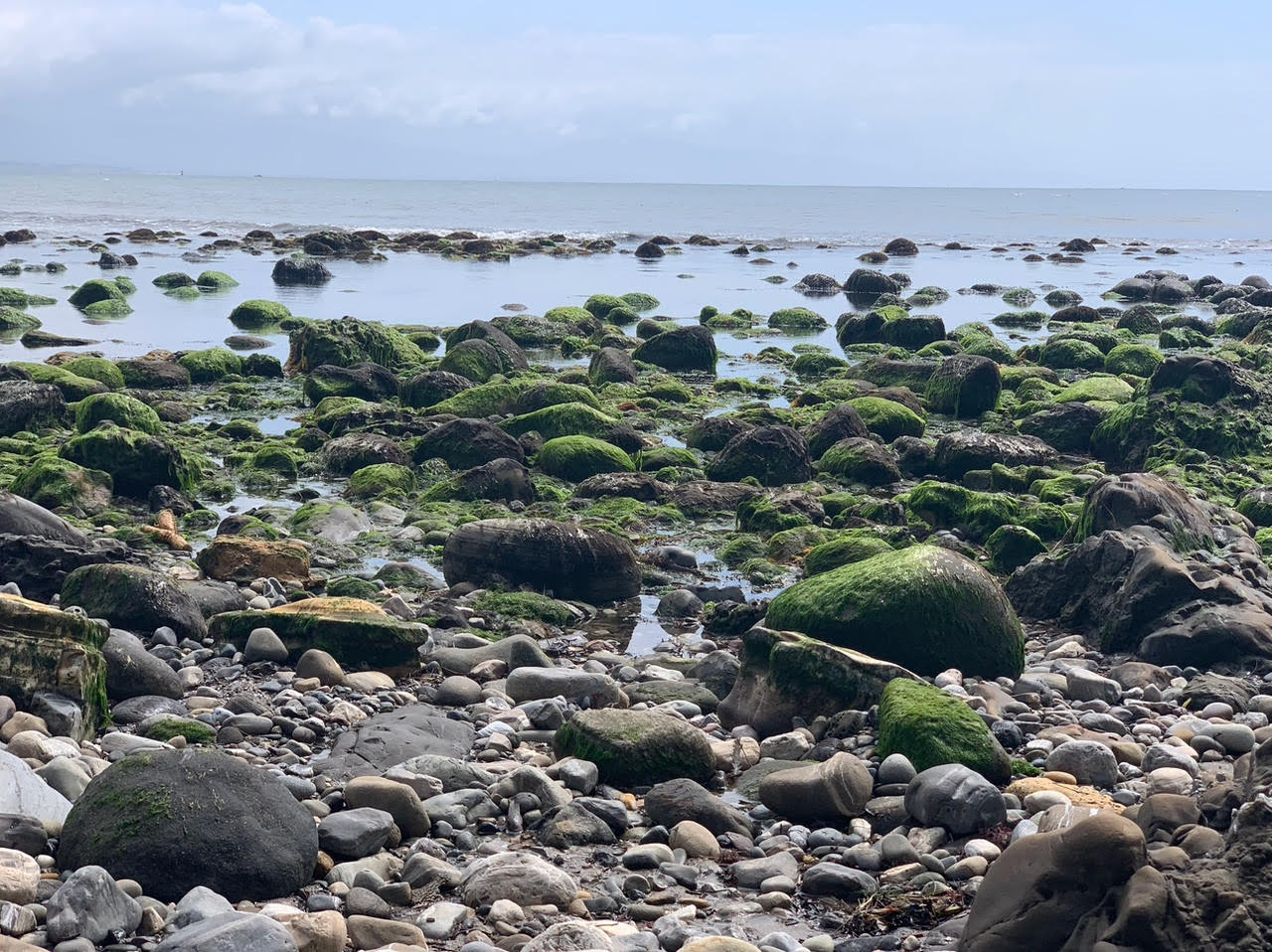Barren Tide Pools for Earth Day
Does Anyone Else Feel the Loss of Life?

With Earth Day approaching, the following question takes on even more importance. We cannot celebrate the ocean’s recovery when in fact the situation has become more severe than ever, despite all efforts of ecology-minded people and organizations to restore the coastline to its former opulence:
A question for you who grew up exploring Southern Californian tide pools — or others on more distant shores: Am I alone in feeling some melancholy when nowadays looking into the delightful miniature ponds that appear among boulders at low tide? I don’t mean the new ones created by the extreme loss of sand in this year’s storms, but rather the seasoned ones whose moss and sea grass have been groomed by the moving tides over many years, maintained to perfection like little bonsai gardens with ponds.
The pools themselves are as beautiful as they were when I was a curious kid climbing from rock to rock, never tiring of seeing more. But now something is sadly amiss and simply missing: Sea Life.

Beginning with the 1969 oil spill that devastated this coastline, the teeming variety of living, moving creatures largely disappeared and still has not really returned. And this ongoing tragedy is happening within a prestigious marine sanctuary that supposedly has the most protected and healthiest waters on any U.S. coast.
Looking into a practically lifeless pool, I now can vividly see with my mind’s eye the little hermit crabs in their borrowed shells, leaving their footprints in the sand while criss-crossing the bottom. I can see tiny and larger orange and red crabs sitting on the rocks at the water’s edge, waiting for little fish to come by. And lining the lower edges of each pool, the sea anemones open their flower-like giant mouths encircled by sticky feelers moving in the water to grab careless passersby and pull them into the gaping throat. Several starfish, large and small, festively decorate the boulders with vivid colors. And a number of sea urchins, already so well guarded by their venomous spikes, have squeezed between the boulders for even more protection. And, well disguised among strands of seaweed, a small octopus patiently waits to fondly embrace its evening meal.
All of this could have been happening simultaneously in one single pool. No wonder kids like me could spend endless summer hours studying such densely and diversely populated waters, occasionally poking an anemone with a piece of seaweed to trigger its capturing process, or coaxing a little crab with a twig to make it grab the stick with its claw. And now I try to find even one of these species in such inviting, healthy looking pools and am usually disappointed.
Nowadays, children exploring the pools have no idea how they used to be and are cheerful enough, but I detect many of them seeming slightly bored — which I never ever was. My parents had to drag me away.
Now I am still moved by the infinite beauty of the rippling water mirroring the sun, and by the perfect placement of every boulder and pebble. But inevitably a bitter-sweet melancholy mingles with my joy, like the long strands of sea grass moving gently but increasingly with the slowly rising tide.
So again my question: Am I alone in feeling this way, or do some of you share my melancholy when meandering among the pools we so deeply cherish?




You must be logged in to post a comment.